Hungry trout are hunting for food as the water warms along the coast of the Carolinas. Here’s how and where one guide targets them, plus why.
Spring is here!
The bone-chilling winter is finally over, and its time to get out and enjoy the awesome weather. A new hunting season targeting a feathered favorite will be underway in April, but it’s a perfect time to enjoy a thrilling adventure along the salty shores.
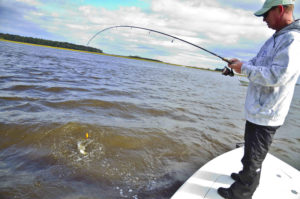
As soon as the water temperature begins its annual upward move, speckled trout will come out to play, and the waterways, rivers and jetties become ground zero for hot springtime action.
While the Carolinas may not receive the exposure that Mississippi and Louisiana marshes or hundreds of miles of speckled Texas shorelines do, the unique sounds, rivers and waterways provide excellent trout habitat and plenty of speckled bounty to reel in.
For a seasoned angler in the Carolinas, a limit of speckled trout can make it back to the dock on virtually any day of the year. There is little doubt that the fall bite is among the best; for seasoned trout anglers, spring is a season to look forward to, because the bite can be off the chain and can closely resemble the level of action in fall.
Spring conditions have one major advantage, and Tripp Hooks of Captain Hook Outdoors out of Ocean Isle Beach, N.C., is right on top of it.
“When the spring weather arrives and the water temperatures begin to rise, the speckled trout start biting real good,” said Hooks (910-540-7332). “Trout have tons of bait to eat in the fall, but it’s a different story in the spring. Bait is scarce, and trout are starving and will eat just about anything they can find.”
Food options are available for trout and other inshore predators this month. Small mullet, mud minnows, glass minnows and maybe even a new crop of shrimp become available, but the availability of bait is significantly less than during the summer or fall. The lack of food and warming waters bring trout out of their winter havens to find groceries to fuel their hunger.
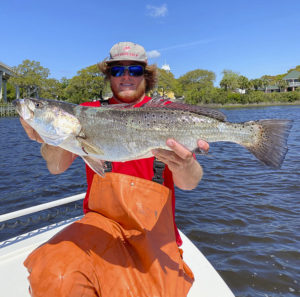
“In the spring, trout slide back downstream from the top of rivers, creeks and out of canals into the mouth of creeks, the mouth of rivers, to the jetties, and into the (Intercoastal) Waterway,” he said. “They basically filter out of the skinny stuff looking for a meal.”
Food becomes more abundant in the waterways, and trout become regular visitors to fill their bellies at every opportunity.
Water temperature is a major concern in the spring. Trout are known for preferring cooler water, but that is typically more true during the summer and fall. In winter and spring, trout seek out warmer waters in their preferred range.
“Trout tend to be happiest when the water temperature ranges between 55 and 65 degrees. And in the spring, when water temps hit 55 degrees, you can count on a good bite if you can find where they’re feeding,” he said.
Tides can make a major difference in water temperature during the spring because the ocean remains cold, and the skinny, inshore waters are heating up on warm, sunny days often associated with spring weather.
“Most of the year, all tides can produce fish, but in the spring, the falling tide is noticeably better than the rising tide,” he said.
There can be as much as a 15-degree temperature change between ocean waters and the backs of the creeks. As the tide falls, the warm water filters out of the creeks and mixes with the cooler ocean waters in the main rivers, channels and waterways.
Hooks fishes from Southport, N.C., all the way to just south of Little River, S.C., near North Myrtle Beach. With the exception of the larger estuaries associated with the Cape Fear River at Southport, the majority of these grounds provide limited opportunities. But Hooks catches more than his fair share of specks in the spring.
“I fish at the mouth of the Calabash River, Lockwood Folly River, Shallotte River and of course, the ICW,” he said.
According to Hooks, the ICW is a go-to place for these trout because of the consistent habitat.
“I fish for trout along the ICW quite a bit in the spring,” he said. “I target that first ledge that ranges from 3 to 7 feet. I will fish the edge of the ledge all the way to the grass line or along the shell banks.”
The shelves along the ICW are bordered with grass, docks, oyster shells and plenty of muddy banks subject to the thermal effects of the sun. The ICW is protected from heavy wind most of the time, and the shallow waters trap heat and warm quickly providing an excellent place for bait and predators to frolic.
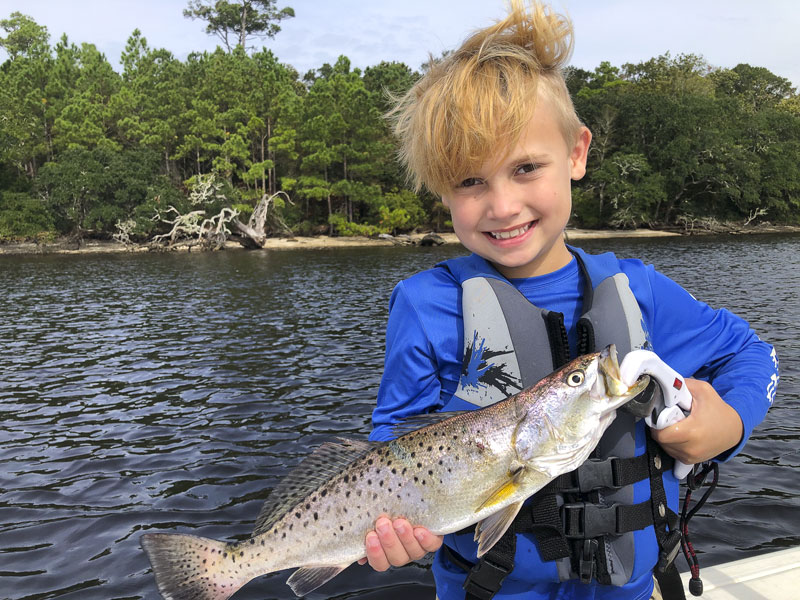
According to Hooks, there are two major differences in fishing tactics between spring and fall. The first is the level in the water column that he targets. He targets shallower areas in the spring as opposed to deeper spots, closer to the bottom, in the fall.
“The fish are shallower in the spring. I tend to float my live baits shallower and will pull up into the water column,” he said.
Speckled trout are patrolling the shallower places up next to the banks, looking for bait trying to warm up, and feed that brings up a second major difference in spring tactics.
“In the fall and winter, the trout are concentrated in tight schools and in confined areas,” he said. “In the spring, they will be working down a bank in the same type of habitat. There is less bait available, and it is usually scattered out some. We fish the same areas, but the fish just will not be stacked up in one spot.”
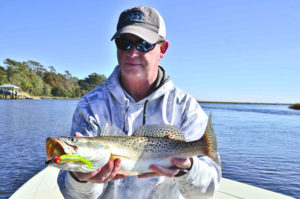
Hooks’ favorite live bait is always going to be shrimp, but any live bait can produce a solid trout bite in the spring. Artificial lures can also be valid options as well.
“There really isn’t that much bait available, and the fish are hungry and very likely to strike a slow-moving, suspending lure,” he said.
Hooks prefers suspending lures such as Rapala X-Raps, MirrOlure 17MRs and other options that can be fished slowly in 2 to 5 feet of water. He is also a fan of slinging a topwater lure this time of year to entice a true gator trout.
“Some of the biggest fish I catch all year are in March and April,” he said.
Spring fishing can be less predictable than a typical fall bite, when every oyster point and grass line produces consistently, but a warm April day can be one to set in your memory when that 30-inch trophy shows up and inhales the lure. Of course, monster trout of this size are quite the diamond in the rough. Most anglers will surely be satisfied with a limit of 18-inch fish iced down and ready for the ride back to the casita.

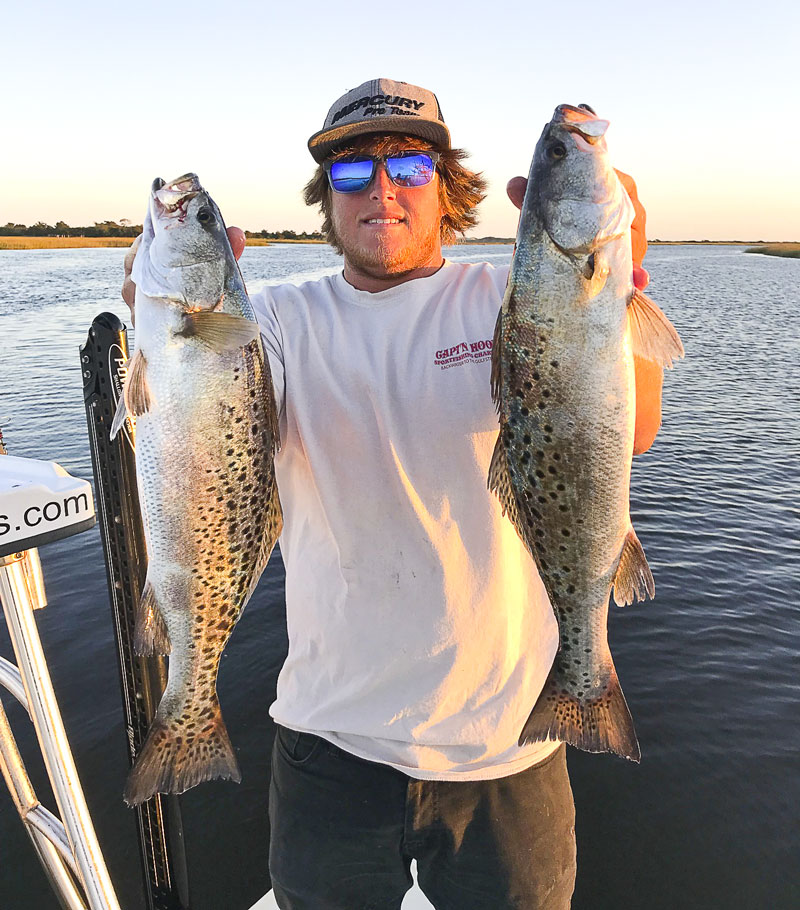




Be the first to comment